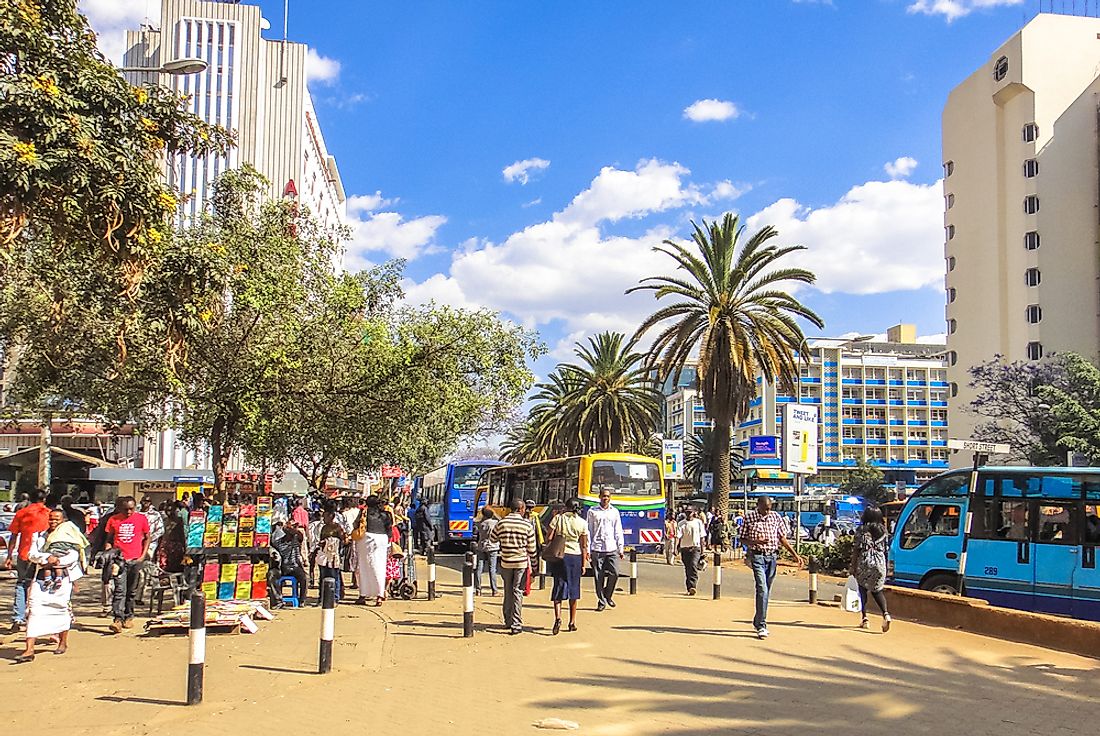Largest Ethnic Groups In Kenya

Kenya is an East African nation with an estimated population of 46.79 million people, according to estimates from 2016. The official language is English as the country was formerly a British colony, while Kiswahili is the national language. The country has multiple ethnic groups that occupy different regions in the nation each with their language. The prominent ethnic groups include the Kikuyu, Luhya, Luo, Kalenjin, Kamba, and Meru peoples. These major ethnic groups occupy most government positions and other senior positions in Kenya. Small African tribes, Asians, Arabs, and Europeans make up ethnic minority groups.
Largest Ethnic Groups In Kenya
Kikuyu
Kikuyus are Kenya’s largest ethnic group, comprising an estimated 22% of the population. They are a Bantu-speaking group that is widely found in the central region of Kenya. A common myth states that the Kikuyus originated from a sycamore tree ‘Mukuyu.' Kikuyu literature was expressed in the form of riddles, folktales, songs and dances before missionaries came and introduced education. Upon the arrival of missionaries, Kikuyus were taught to read and write, and as a result, prominent literature icons emerged. Some of the notable Kikuyu literature writers are Ngugi wa Thiong’o and Meja Mwangi. Kikuyus are mostly subsistence farmers who cultivate maize, beans, and vegetables. They also grow coffee and tea. Kikuyus have been prominent in the Kenyan government since independence. Three out of the four presidents that have ruled Kenya since independence have been Kikuyus.
Luhya
The Luhya ethnic group makes up the second largest ethnic group in Kenya. They are estimated to comprise 14% of the Kenyan population. They belong to the Bantu group of people. Luhyas are made up of several subgroups such as Ababukusu, Abatachoni, Abaidakho, Abaisukha, Abatiriki, Abanyala, Abakisa, Abamarachi, Abamarama, Avalogoli, Abasamia, and Abanyala. They are said to have migrated into Western Kenya from eastern Uganda in the 14th Century. Luhyas celebrate births and initiation ceremonies. Traditionally, Luhyas engaged in ancestor worship. They have since adopted Christianity and rarely engage in the traditional rituals. Chicken is a delicacy for the Luhya people, and it is prepared during special occasions. Luhyas in the rural areas mostly practices farming where they cultivate maize, beans, cassavas, vegetables, and sugarcane.
Luo
Luos are a Nilotic group and the third largest ethnic group in Kenya. They make up approximately 13% of the Kenyan population. Luos mainly occupy Nyanza Province in Western Kenya. They are said to have moved into Kenya from Sudan. Luos practice fishing along the shores of Lake Victoria. The women practice subsistence farming. Traditionally, polygamy was upheld in the Luo community. Storytelling is an integral part of the Luo culture, and it is used to pass down morals to the younger generations. Despite the Luos being a large ethnic group in Kenya, they have not been fairly represented in Kenya’s leadership positions.
Kalenjin
Kalenjins account for 12% of the Kenyan population, making them the fourth largest ethnic group. The Kalenjin ethnic group is a Nilotic community composed of Kipsigis, Pokot, Tugen, Keiyo, Nandi, Marakwet, Sabaot, and Terik subgroups. The Kalenjin are mostly found in the Rift Valley region in Kenya. Kalenjins use folktales to pass down their norms and values to younger generations. Teenage boys and girls go through initiation rituals where they are ushered into adulthood. Kalenjins practice livestock keeping and subsistence farming. Livestock rustling is common among some Kalenjin subgroups.
Coexistence Among Kenyans
Kenya is a multi-ethnic nation with as many as 42 ethnic groups living in the country. The numerous groups contribute to the rich Kenyan culture. In the past, ethnic minority groups were often neglected in development issues. However, the nation implemented a new constitution in 2012 that protects the rights of minority groups. In recent years, the different ethnic groups have coexisted harmoniously.
Largest Ethnic Groups In Kenya
| Rank | Ethnic Group or Tribe | Share of Kenyan Population |
|---|---|---|
| 1 | Kikuyu | 22% |
| 2 | Luhya | 14% |
| 3 | Luo | 13% |
| 4 | Kalenjin | 12% |
| 5 | Kamba | 11% |
| 6 | Meru | 6% |
| 7 | Indian and Other Asian | 0.1% |
| 8 | Arab | 0.1% |
| 9 | White European | <0.1% |
| Other African Tribes and Other Groups Not Listed | 21% |











